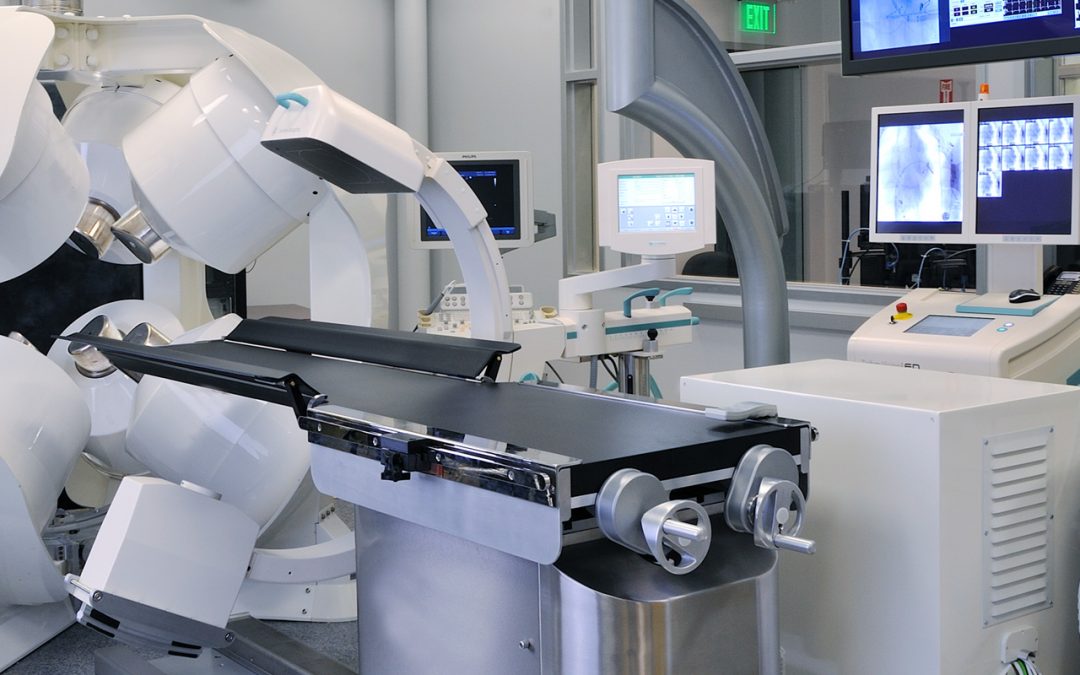The following article is from a press release related to the development work done by Magnetecs Corporation on the Catheter Guidance, Control, and Imaging System (CGCI). CGCI was the precursor to the current Proteus™ Robotic Guidance System and represented more than 20 years of research and development into advancing catheter guidance from the simple manual guidance of a surgeon, to a real-world ability to provide robotic-assisted navigation of a catheter inside the dynamic environment of the human body with a precision and an ability to remember and return to position that had never before been done. The NKC engineering team was able to take the pioneering work it achieved in the CGCI system from a 20-ton multi-million dollar machine requiring a dedicated operation suite and reduce it down to a portable advanced robotic-controlled device the size of a shoebox, that provided automated AI-assisted guidance that not only meet the ability of the CGCI but in many ways exceeded it.
DATELINE: February 19, 2015
A Good Laboratory Practice (GLP) animal study to certify the Neuro-Kinesis Catheter Guidance Imaging and Control (CGCI) system has been completed. The GLP study was conducted in preparation for the first human studies to be done at Hospital Universitario La Paz in Madrid, Spain.
Clinical and Engineering team conduct GLP study from control room[/caption]
Four Chambers of the Heart
“This was the first trial of the CGCI conducted in all four chambers of the heart, and by every measure, it was a successful GLP study, with all primary objectives decisively met, and with a clear demonstration of the excellent performance of the CGCI remote navigation system,” said Josh Shachar, Chief Innovation Officer for Neuro-Kinesis. “All relevant regions of the four chambers of the heart were reached with precision, reliability, and speed.”
The study was conducted by Dr. Eli Gang, MD, FACC, FACP, Chief Operating Officer of Neuro-Kinesis, who has served as Director of the Clinical Electrophysiology Laboratory at Cedars-Sinai Medical Center in Los Angeles and is currently Clinical Professor of Medicine at the UCLA Medical School, along with Dr. Vivek Reddy, Director of Clinical Electrophysiology at Mount Sinai Medical Center in New York City. During the study, a highly detailed map of the heart was first created using the CGCI magnetically guided catheter. “Our magnetically derived map was compared with the pre-procedure CT scan, and the visual correlation was excellent,” said Dr. Gang.
“More than 100 points were targeted in the study. For 30 of the points targeted, the catheter was commanded to return twice in an automatic mode. In each of the 60 instances of automatic targeting, the CGCI controller navigated the catheter tip precisely back to the chosen site. We had a 100% “repeatability” rate for all chosen sites in all 4 cardiac chambers, meaning the system was always able to bring the catheter tip precisely back to a pre-selected location. Within the left atrial chamber, we created a linear and circular set of target points and commanded the catheter to reach those geometry-based sites. At each of these target sites, we delivered short bursts of RF energy so as to “tattoo” the inner lining of the heart chamber, i.e., to verify at post-mortem examination that the catheter had actually been at precise anatomic locations. Again, the catheter reached each designated anatomic site in an unerring manner,” Dr. Gang concluded.

CGCI EP suite in preparation for clinical trials
CGCI Human Trials in Madrid for CE Certification
CGCI uses eight electromagnets in a unique configuration to intelligently guide a magnetically-tipped catheter, enabling a physician to precisely and consistently control surgical tools in highly dynamic or previously inaccessible environments while enhancing both the physician’s dexterity and patient’s safety. The first installation of the CGCI surgical suite system for human trials is installed at a leading EP center located at Hospital Universitario La Paz in Madrid, under the auspices of Dr. Jose Luis Merino Llorens, Director of the hospital’s Arrhythmia & Electrophysiology Research Unit. Trials conducted there initially studied the CGCI system in the mapping of the heart, a diagnostic procedure that is performed for patients who have an arrhythmia, or irregular heartbeat.
About CGCI
CGCI is an exciting new technology that has potential applications in virtually all minimally invasive procedures utilizing a medical catheter. The system is expected to become an essential tool in catheterization procedures, providing physicians with significantly increased efficiency, precision, efficacy, and safety. CGCI provides a unified system for robotic guidance, control, and imaging of electrophysiology and other procedures. For the first time, integrated imaging in real-time control and visualization, with tactile feedback, allows the physician operator to perform manipulation of all tools fully in the digital realm and automatically. The CGCI system is integrated with a complete suite of sophisticated cardiac mapping and navigation technologies.

